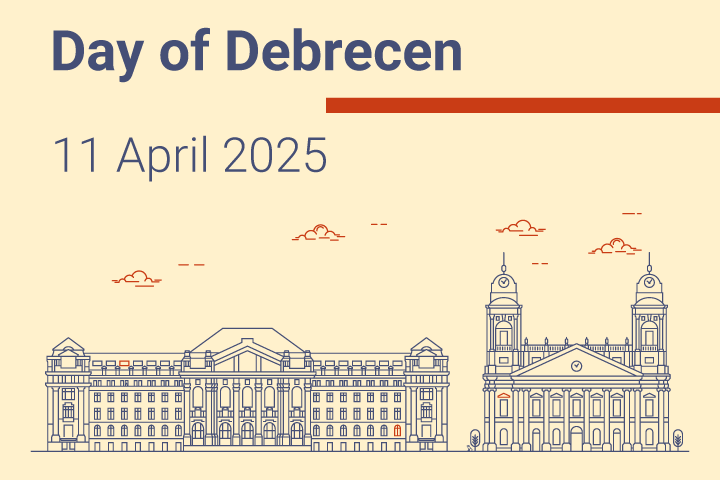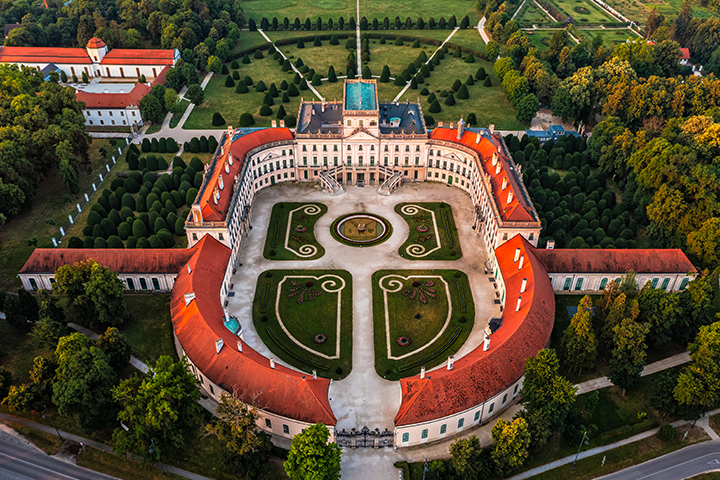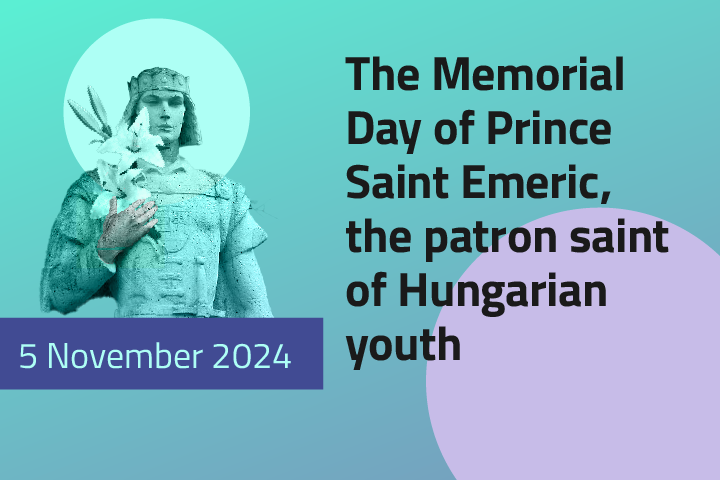Population and vital events
Population statistics show the change in the country’s population number and its composition by sex, age and marital status. Statistics relating to vital events provide information on factors basically influencing changes in population, such as births, deaths, marriages, registered partnerships, divorces, as well as internal and international migrations.
Key figures
Adjusted population number
Indicator description
The full-scope censuses conducted every ten years show a comprehensive picture of the number and composition of the population. For determining the annual population number in the period between two censuses, the starting point is the population number of the last census (currently the census with the reference date of 1 October 2022) , and from this, the population was estimated by using natural increase or decrease data available from the statistics of vital events until 2000. From 2001 international migration is also taken into account.
Source of data:
Summary Tables (STADAT)
Last data for period: 2025
Natural increase/decrease per thousand population
Indicator description
Difference between the number of live births and deaths, per thousand population.
Source of data:
Summary Tables (STADAT)
Last data for period: February 2025
Average life expectancy at birth
Indicator description
Average life expectancy expresses how many further years of lifetime can be expected by people of various ages at the mortality rate of the given year.
Source of data:
Summary Tables (STADAT)
Last data for period: 2024
Ageing index
Indicator description
The 65 year-old and older population as a percentage of the 14 year-old and younger child population. If it is higher than 100, the number of the old-age population is higher than that of the child population.
Source of data:
Summary Tables (STADAT)
Last data for period: 2024
Featured
Day of Debrecen, 11 April 2025
King Leopold I gave Debrecen free royal town status in a patent dated 11 April 1693, in commemoration of this event the city is celebrating since 1998 its day on 11 April. Debrecen was the capital of the country twice, since the mid-1980s it is the second most populous city of Hungary (preceding Miskolc). It is a significant economic and educational-cultural centre. The city is the first in the rank of county seats considering the number of registered enterprises, and the University of Debrecen hosts, among the tertiary educational institutions of Hungary, the most foreign students.
HCSO Monitor
The collection of interactive figures provides up-to-date information on the latest domestic and international socio-economic trends. The decisive part of the figures included in HCSO Monitor are downloadable in both image and data formats (PNG, SVG and CSV). Feel free to browse the data in HCSO Monitor, updated many times a week!
5,653 children are born and 10,934 people lose their lives; Vital events, February 2025
According to preliminary data, 5,653 children were born and 10,934 people died in February 2025. The number of births lessened by 9.1%, that of deaths by 0.7% and that of marriages by 14% compared to the same month of the previous year.
International Women's Day, 8 March 2025
Women's Day, originally linked to the fight for women's suffrage and equality, was first celebrated more than 100 years ago. In Hungary, Women's Day events were organised throughout the country as early as 1914, and since 1948 women have been celebrated on 8 March. Today it is more about recognising the achievements and social efforts of women. As in most EU Member States, women are in the majority in Hungary, with around 5 million women living in Hungary on 1 January 2024, 7.3% more than men.
Marriage Week, 9–16 February 2025
The Marriage Week initiative started in England more than 25 years ago. In Hungary, it has been organised since 2008, this year from 9 to 16 February. The aim of this series of events is to raise awareness of the importance of marriage and family. The long-term decline in the number of marriages in our country reached its lowest point in 2010, with 36 thousand marriages, and then started to increase, reaching over 72 thousand in 2021. Since then, there has been a decrease; barely 47 thousand couples got married in 2024.
Demographic Yearbook, 2023
In 2023, the number of deaths decreased to a greater extent than that of births, resulting in a slower pace of natural decrease. Life expectancy at birth has risen to its highest level ever. The decline in the number of marriages has continued. The Demographic Yearbook provides detailed data on the composition of the population, the changes in births, marriages, divorces and deaths, as well as the features of migration.
Statistical Yearbook of Hungary, 2023
The yearbook provides an overview of Hungary's demographic, social and economic processes, environmental characteristics and their changes over time, with the help of tens of thousands of data of 500 tables, graphs and maps. Innovatively, the Tourism, catering chapter in the volume includes the gross receipts of tourist accommodation establishments by type of accommodation. Another change is that this year the Regional data chapter already presents territorial data by tourism area, giving greater emphasis to tourist destinations.
Hungary, 2023
Geopolitical tensions continued to overshadow economic developments in 2023, with the gross domestic product falling by 0.9%. Inflationary pressures gradually eased, but the 17.6% annual increase in consumer prices led to a decline in real earnings and consumption, and negatively affected investment decisions. Despite the economic difficulties, employment has reached a record high. In 2023, the number of deaths and births continued to fall, in addition to the decrease in the number of women of childbearing age.
Snapshots, 2023 - Vital events
In 2023, the number of births was lower than in the previous year, yet the number of deaths also declined by a greater extent, resulting in a slight decrease in the rate of natural decrease. The smaller surplus of international migration compared to the previous year moderated the population decline, resulting in a net decrease of 16,000 people in Hungary's population. The number of women of childbearing age continued to diminish, as did the fertility rate. The number of marriages fell, but that of divorces also lessened.
Detailed Gazetteer of Hungary updated
We updated data on intra-settlement housing and resident population, available within the section titled Parts of towns and of settlements, according to the status at the 2022 Census. The Detailed Gazetteer of the Countries under the Hungarian Crown was first published 150 years ago, in 1873, being edited and compiled by the National Hungarian Royal Statistical Office, followed by 25 additional printed editions, the last one in 2003. Since then the publication has come out online. The Detailed Gazetteer is the name and data repository of Hungary’s localities, the present version containing data according to the administrative status as of 1 January 2023.
Related themes
- Censuses
- Health care, accidents
- Housing
- Income and consumption
- Justice
- Labour
- Living conditions
- Men and women
- Regional statistics
- The young and the elderly
Methodological information
First releases |
Latest release | Next release |
|---|---|---|
| Vital events, February 2025 | 28/03/2025 | 25/04/2025 |
Publications |
Released |
|---|---|
| Hungary 1st-3rd quarters of 2024 | 09/01/2025 |
| Regional Statistical Yearbook of Hungary, 2023 | 27/11/2024 |
| Demographic Yearbook, 2023 | 15/10/2024 |
| Hungary, 1st semester of 2024 | 14/10/2024 |
| Statistical Yearbook of Hungary, 2023 | 29/08/2024 |
| Hungary, 2024 Q1 | 26/08/2024 |
| Hungary, 2023 | 27/06/2024 |
| Snapshots, 2023 – Prices | 21/05/2024 |
| Statistical Pocketbook of Hungary, 2023 | 27/05/2024 |
| Snapshots, 2023 – Vital events | 17/05/2024 |
| Hungary, quarters 1-3 of 2023 – On the path of disinflation | 10/01/2024 |
| Regional Statistical Yearbook of Hungary, 2022 | 17/01/2024 |
| Hungary, 1st semester of 2023 – disinflation started | 19/10/2023 |
| Demographic Yearbook, 2022 | 06/11/2023 |
| Statistical Yearbook of Hungary, 2022 | 23/11/2023 |
| Hungary, 2023 Q1 | 30/08/2023 |
| Statistical Pocketbook of Hungary, 2022 | 14/06/2023 |
| Hungary, 2022 | 28/06/2023 |
| Hungary in figures, 2022 | 11/07/2023 |
| Hungary, Quarter 3 2022 | 06/02/2023 |
| Regional Statistical Yearbook of Hungary, 2021 | 10/01/2023 |
Release and revision calendarPublication repertory
Census data |
Census |
|---|---|
| National regional data | Population census 2011 |
| 2. Main characteristics of the population and the dwellings | Microcensus 2016 |
| 3. Demographic data | Microcensus 2016 |





































